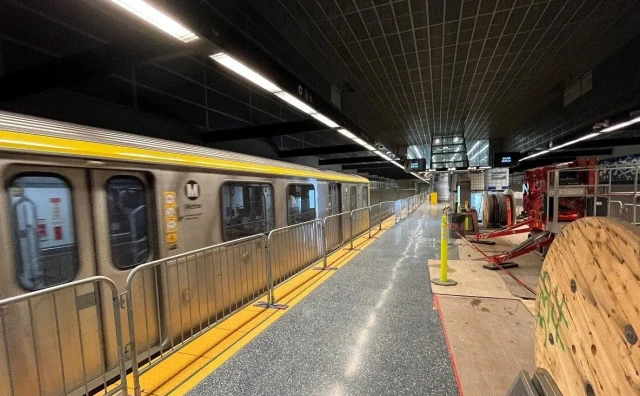With our free press under threat and federal funding for public media gone, your support matters more than ever. Help keep the LAist newsroom strong, become a monthly member or increase your support today during our fall member drive.
A firefighter's 1943 photos of the Warsaw Ghetto uprising have been found

WARSAW, Poland — Warsaw's Jewish history museum on Wednesday presented a group of photographs taken in secret during the Warsaw Ghetto Uprising of 1943, some of which have never been seen before, that were recently discovered in a family collection.
The POLIN Museum of the History of Polish Jews described the discovery of negatives with some 20 never-seen images as important discovery.
The photos were taken inside the Warsaw Ghetto by a Polish firefighter, Zbigniew Leszek Grzywaczewski, as the Nazi Germans were brutally crushing the uprising of 1943. As the Germans burned down the ghetto, they called in Polish firefighters to keep the flames from engulfing nearby buildings outside the ghetto.
The museum's historians said that the value of Grzywaczewski's pictures lies in their being the only known images from the ghetto uprising that were not taken by the German forces, and which therefore were not shot with the intention of serving Nazi propaganda.
Grzywaczewski, then a 23-year-old whose family members were risking their lives to save Jews, took his camera into the ghetto and secretly photographed Jews being led to Umschlagplatz, the holding area where the occupying German forces held them before deportation to the Treblinka death camp. The images also show burning buildings.

Grzywaczwski's son, Maciej Grzywaczewski, recently found negatives with the images in the collection of his father, who died in 1993. He said he became very emotional when he found them.
Some of his father's other images, including photos capturing the Jews being deported, are held by the U.S. Holocaust Memorial Museum in Washington.
POLIN says the discovery adds more pictures to the deportation sequence. Furthermore, the ones in Washington are prints that have been cropped, with the newly discovered negatives offering more details.
Some of the photos are blurred or not framed well, indicating that Grzywaczewski, who was an avid photographer, was taking them surreptitiously.

The newly discovered images will be included in an exhibition at the POLIN museum called "Around Us a Sea of Fire," opening on April 18, the eve of the 80th anniversary of the Warsaw Ghetto Uprising's outbreak.
It began on April 19, 1943, after German troops and police entered the ghetto to deport its surviving inhabitants. Some 750 young Jewish fighters armed with just pistols and other light arms attacked a German force more than three times larger. In their last testaments they said they knew they were doomed but wanted to die at a time and place of their own choosing.
In the end, the fighters held out nearly a month, longer than some German-invaded countries did.
It was largest uprising by Jews during World War II and the first significant urban revolt against the German occupation in Europe. By May 16, 1943, the Germans had crushed the uprising and deported surviving ghetto residents to concentration and death camps.
Copyright 2023 NPR. To see more, visit https://www.npr.org. 9(MDA1OTI3MjQ5MDEyODUwMTE2MzM1YzNmZA004))
At LAist, we believe in journalism without censorship and the right of a free press to speak truth to those in power. Our hard-hitting watchdog reporting on local government, climate, and the ongoing housing and homelessness crisis is trustworthy, independent and freely accessible to everyone thanks to the support of readers like you.
But the game has changed: Congress voted to eliminate funding for public media across the country. Here at LAist that means a loss of $1.7 million in our budget every year. We want to assure you that despite growing threats to free press and free speech, LAist will remain a voice you know and trust. Speaking frankly, the amount of reader support we receive will help determine how strong of a newsroom we are going forward to cover the important news in our community.
We’re asking you to stand up for independent reporting that will not be silenced. With more individuals like you supporting this public service, we can continue to provide essential coverage for Southern Californians that you can’t find anywhere else. Become a monthly member today to help sustain this mission.
Thank you for your generous support and belief in the value of independent news.

-
Kevin Lacy has an obsession with documenting California’s forgotten and decaying places.
-
Restaurants share resources in the food hall in West Adams as Los Angeles reckons with increasing restaurant closures.
-
It will be the second national day of protest against President Donald Trump.
-
The university says the compact, as the Trump administration called it, could undermine free inquiry and academic excellence.
-
This is the one time you can do this legally!
-
Metro officials said it will be able to announce an opening date “soon.”







